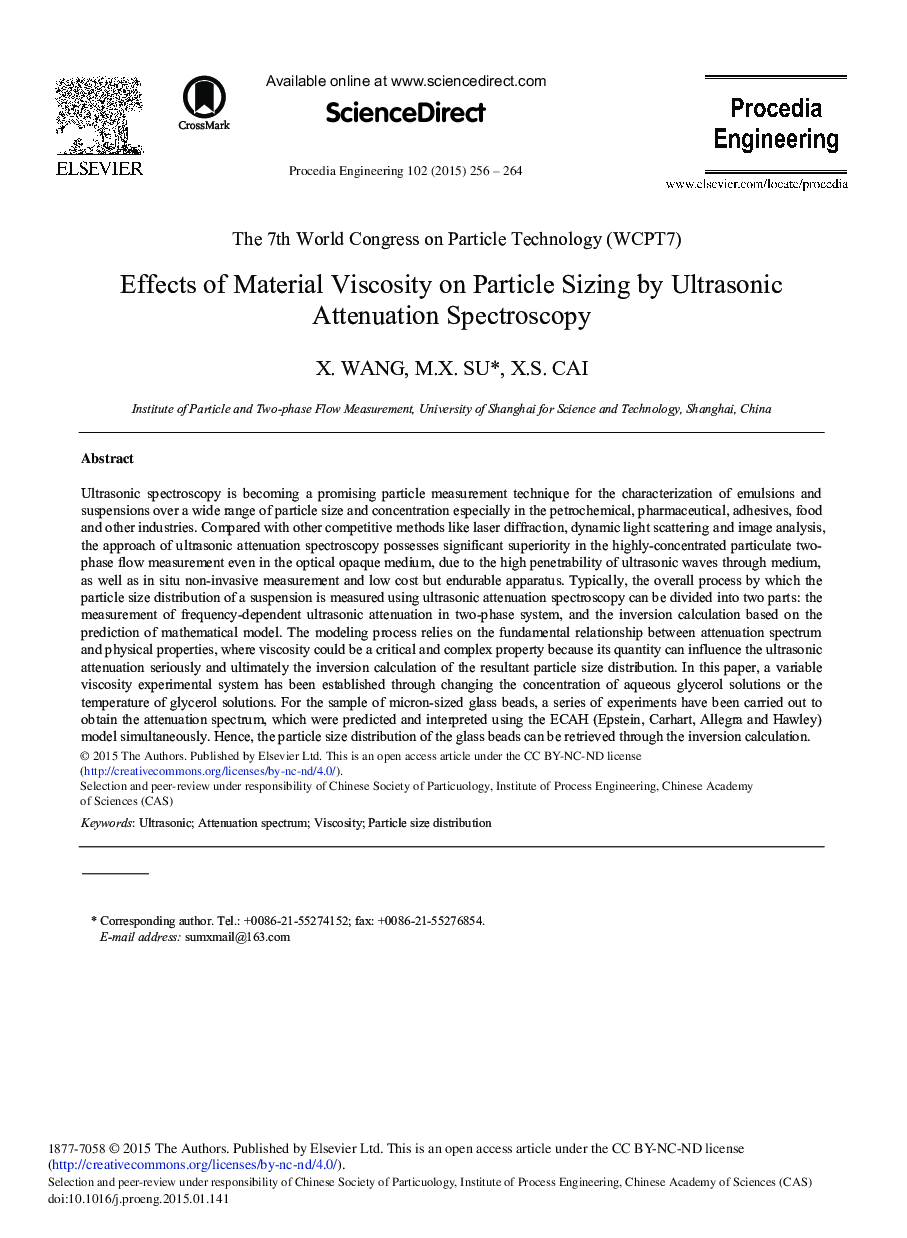| کد مقاله | کد نشریه | سال انتشار | مقاله انگلیسی | نسخه تمام متن |
|---|---|---|---|---|
| 856566 | 1470724 | 2015 | 9 صفحه PDF | دانلود رایگان |
Ultrasonic spectroscopy is becoming a promising particle measurement technique for the characterization of emulsions and suspensions over a wide range of particle size and concentration especially in the petrochemical, pharmaceutical, adhesives, food and other industries. Compared with other competitive methods like laser diffraction, dynamic light scattering and image analysis, the approach of ultrasonic attenuation spectroscopy possesses significant superiority in the highly-concentrated particulate two-phase flow measurement even in the optical opaque medium, due to the high penetrability of ultrasonic waves through medium, as well as in situ non-invasive measurement and low cost but endurable apparatus. Typically, the overall process by which the particle size distribution of a suspension is measured using ultrasonic attenuation spectroscopy can be divided into two parts: the measurement of frequency-dependent ultrasonic attenuation in two-phase system, and the inversion calculation based on the prediction of mathematical model. The modeling process relies on the fundamental relationship between attenuation spectrum and physical properties, where viscosity could be a critical and complex property because its quantity can influence the ultrasonic attenuation seriously and ultimately the inversion calculation of the resultant particle size distribution. In this paper, a variable viscosity experimental system has been established through changing the concentration of aqueous glycerol solutions or the temperature of glycerol solutions. For the sample of micron-sized glass beads, a series of experiments have been carried out to obtain the attenuation spectrum, which were predicted and interpreted using the ECAH (Epstein, Carhart, Allegra and Hawley) model simultaneously. Hence, the particle size distribution of the glass beads can be retrieved through the inversion calculation.
Journal: Procedia Engineering - Volume 102, 2015, Pages 256-264
